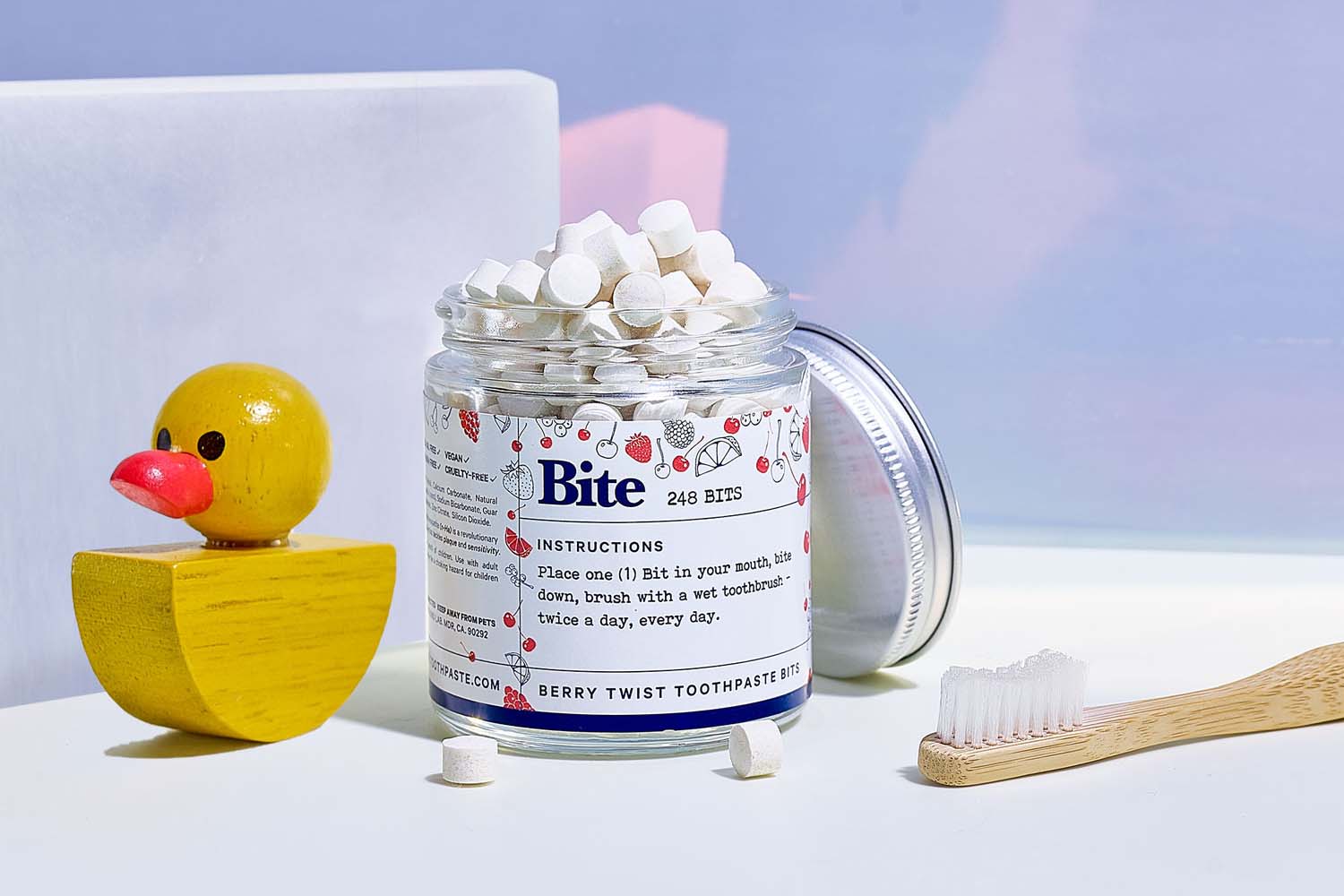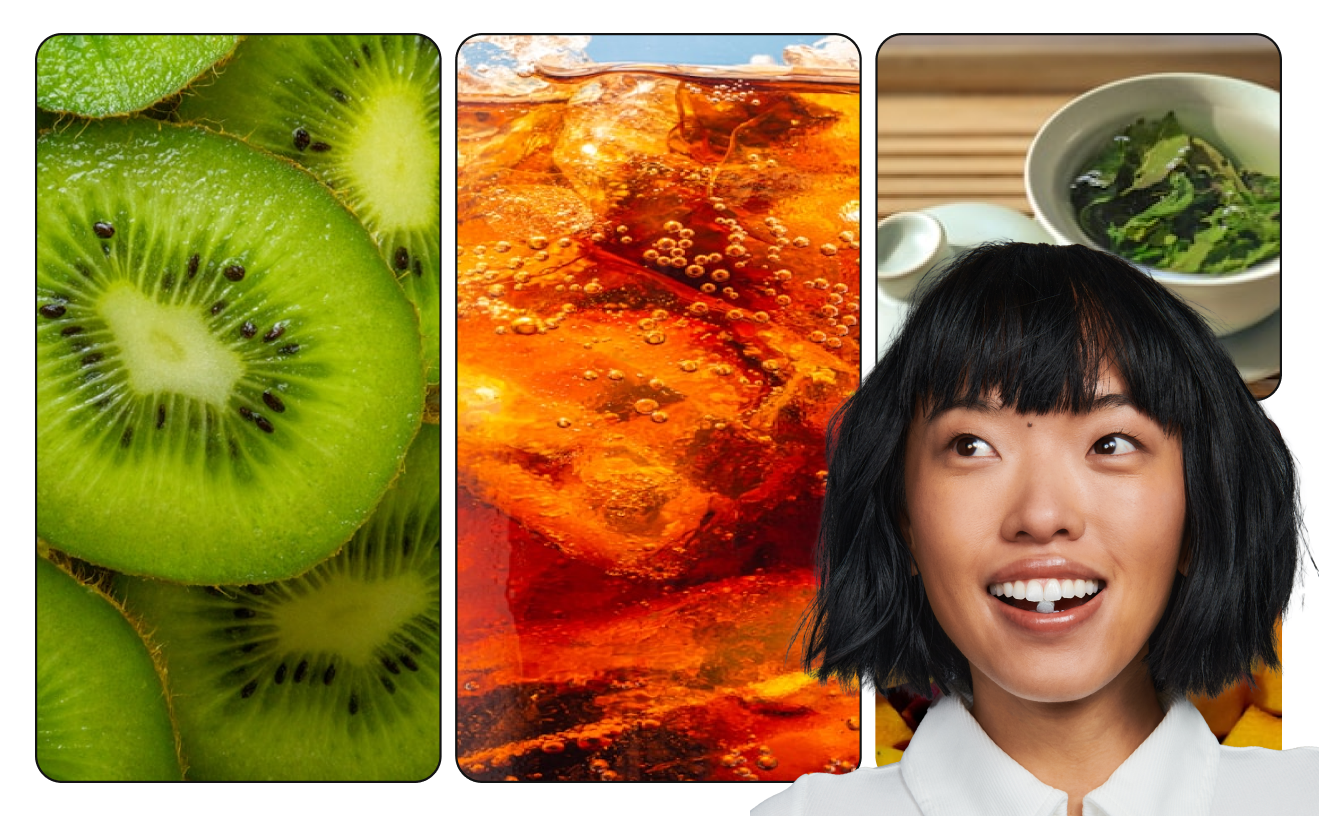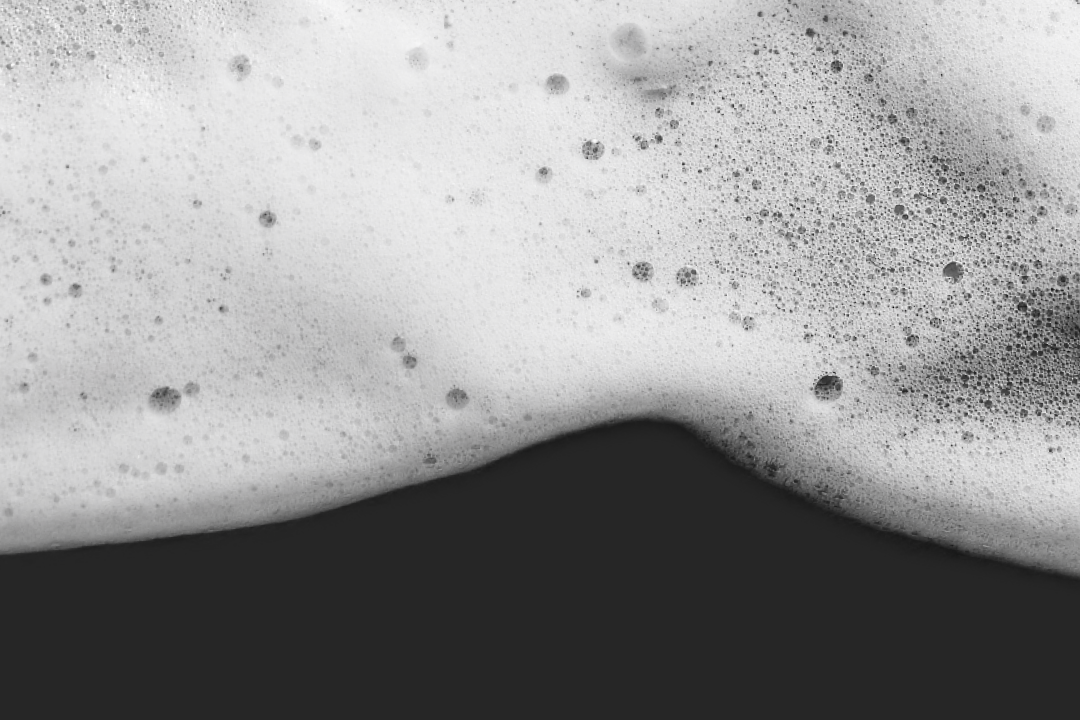What Is SLS in Toothpaste: What You Need To Know
When it comes to modern personal care products, there are often a lot of ingredients listed on that label, some of which can be hard to make sense of.
One common ingredient in many oral and personal care products is sodium lauryl sulfate (SLS), and this little chemical may crop up in more household items than you’d guess. SLS is often found in soaps, shampoos, facial cleansers, detergents, toothpaste, and household cleaning products.
Here at Bite, we are all about understanding what’s in our personal care products and using that knowledge to make the best possible choices for our bodies and the earth.
So, what exactly is SLS, why is it found in so many different types of products, and why do we at Bite make our toothpaste and skincare products without SLS? Read on to find out!
What Is Sodium Lauryl Sulfate?
SLS is a surfactant that can lower surface tension and help different liquids mix.
Think of it this way: many of the products we use for cleaning rely on oil and water working together to get the job done–whether that job is clearing dirt and germs off our hands or getting the grime out of our clothes. But, most of us know that oil and water don’t mix.
That’s where sodium lauryl sulfate often comes in. As an anionic compound, SLS can successfully bind water and oil together, creating a cohesive cleaning substance.
When the oil and water molecules bonded by SLS are rubbed into a surface, it creates a foaming action believed to lead to a deeper and more thorough clean.
What Does SLS Do in Toothpaste?
As a foaming agent, SLS is commonly used in traditional toothpaste, with a concentration ranging from 0.5 to 2.0%.
If you brush your teeth in the mirror, chances are you’ve seen the way that little bead of toothpaste sitting in your brush turns into a frothy, foamy substance that coats your teeth and gets into the small spaces between them.
Along with binding different ingredients together, the foaming nature of SLS can lower surface tension, helping to keep the teeth clean. When toothpaste foams up, it can more easily get to those pesky hard-to-reach places, help loosen and remove any food bits, and strip away the plaque known to produce cavities.
However, there has been some growing weariness around SLS in recent years, with evidence suggesting plenty of reasons to question whether SLS is really the right product for our bodies or our planet.
What Are the Concerns Around SLS in Toothpaste?
While SLS is generally considered safe for most to use in small qualities, there are a number of reasons some of us would prefer to avoid them.
SLS Can Irritate the Skin and Gums
SLS has been found to cause skin and gum irritation for some, especially those with sensitivities.
In skincare products, SLS may also lead to water loss in the skin, leaving the skin dry and uncomfortable feeling.
The higher the concentration of SLS in a product, the more likely it is to cause irritation. A concentration of over 2% SLS is considered irritating to normal skin, and even lower levels can cause issues for those with sensitive skin.
According to U.S. regulations, a product allows no more than 1% of SLS if it is meant to have prolonged contact with the skin or gums.
For many, the risk of irritation from SLS is significantly decreased when it is washed off after a short amount of time. This is why so many kinds of toothpaste, shampoo, and soap use them — they are typically washed away within minutes. However, if you have sensitive skin or want to avoid the risk of irritation altogether, steering clear of products containing SLS is your best bet.
May Worsen Canker Sores
Some of us are more prone to canker sores than others, with about one in five people experiencing them regularly. And those of us who do experience them know just how uncomfortable they are.
A canker sore or mouth ulcer is basically a small lesion in the mouth. They are often small and heal on their own within two weeks, but they can be painful, and it may be difficult to talk or eat.
While we don’t know exactly what makes someone predisposed to canker sores, a few potential causes include stress, tissue damage, hormonal changes, certain vitamin deficiencies, acidic or citrus foods, and — you named it — SLS.
Current research suggests that SLS may cause sores by irritating gums cells and soft tissues in the mouth. SLS can also slow the healing process and heighten discomfort for existing canker sores. No, thank you.
So, if you experience canker sores more regularly or have gum sensitivities, staying away from tubes of toothpaste containing SLS may bring relief.
Is SLS a Carcinogen?
While this has been a cause of concern regarding sodium lauryl sulfate use, there is currently no scientific evidence indicating that SLS causes cancer.
However, if this is something you worry about, that is a valid enough reason to avoid the ingredient until more research is conducted.
SLS Environmental Concerns
At Bite, caring for the planet is just as important as caring for our skin and smiles. We consider the environmental impact of every ingredient we use — and don't use.
After we finish brushing our teeth, all of the ingredients that make up toothpaste don’t just disappear — they go down the drain and pass through wastewater treatment facilities before being released into local waterways.
Because wastewater treatment facilities aren’t equipped to treat chemicals, harsh chemicals in our toothpaste and soaps can end up back in our rivers and coastal waters, affecting aquatic life.
While products containing diluted SLS are less harmful to aquatic life than SLS in their raw material form, chronic toxicity in aquatic life can occur when exposed to SLS, even in low concentrations.
Along with the potential harm to sea critters and aquatic life, many products that use SLS are tested on animals, as these products are required to test for the level of irritation to the skin, lungs, and eyes.
Another environmental concern regarding SLS boils down to how the chemical is sourced and manufactured.
Where Does SLS Come From?
As a synthetic sulfate-based chemical, SLS is made using either petroleum (a fossil fuel) or plant sources such as coconut or palm oil as a synthetic sulfate-based chemical.
Of course, deriving SLS from petroleum can wreak havoc on the environment as the process emits carbon dioxide along with other toxic pollutants and greenhouse gases.
Unfortunately, using palm oil as an alternative creates environmental harms of its own. Demand for palm oil has led to the catastrophic destruction of tropical rainforests as they are replaced with palm tree plantations. Palm tree plantations have also been associated with exploitative labor accusations. This is why all of Bite’s products are 100% palm oil-free.
What Are Some Alternatives To SLS?
Making the best choices for the environment doesn’t mean losing out on quality. There is plenty of evidence that SLS-free toothpaste is just as effective as those containing SLS, without harming the environment or irritating sensitive gums.
Our Toothpaste Bits are free of all harsh sulfates. But don’t worry; you won’t miss out on that squeaky-clean, fresh feel that comes with a frothy toothpaste.
We replace SLS with sodium cocoyl glutamate — a mild and natural foaming agent that is sustainably derived from coconut oil and fruit sugars.
Bottom Line
Here at Bite, we believe oral care should be accessible and satisfying to everyone without damaging the plant. Our vegan, zero-waste products are made with everything you need and nothing you don’t.
SLS may not be directly harmful to those who aren’t prone to mouth sores or who don’t have sensitive gums, but, ultimately, it isn’t necessary to create a great, cleansing toothpaste. There are milder and more environmentally friendly ingredients to opt for, which is exactly what we did.
Our toothpaste bits come in three delightful flavors — Mint, Mint Charcoal, and Berry Twist–and all three contain nothing but naturally derived ingredients free of any sulfates, parabens, and hydrogen peroxide.
When you bite down on any of our delightfully flavored toothpaste bits, you can enjoy the foaming cleanse without any risk to your gums or the planet.
Sources
Sodium Lauryl Sulfate: Water Soluble Irritant Dermatitis Model | Cutaneous Biometrics
Taking a Bite Out of Oral Health | UC San Diego Health
Where Does All the Dirty Water Go? | EPA
8 things to know about palm oil | WWF
Palm Oil's Human Cost Alleged in New Report | National Geographic


